To incorporate an extra depth of flavor into this recipe, I substituted half of the panko bread crumbs with my homemade focaccia crumbs. It added a wonderful unique touch.
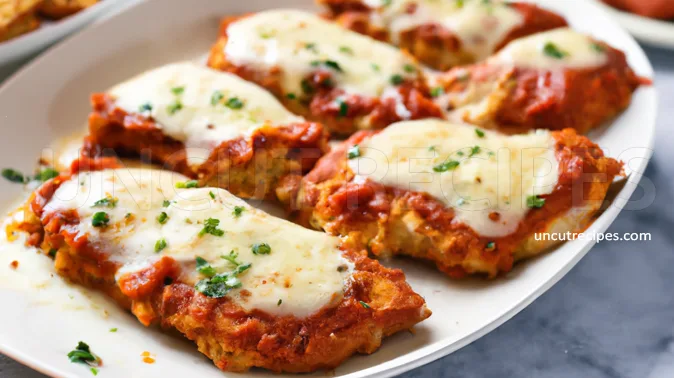
Imagine, if you will, a bustling kitchen in the heart of an Italian-American neighborhood in the mid-20th century. The aroma of simmering tomato sauce wafting through the air, mingling with the tantalizing scent of frying chicken. This is the birthplace of our beloved Chicken Parmesan, a dish that has comforted and delighted generations of families across America.
This recipe grew from the rich traditions of Italian immigrants who adapted their age-old recipes with the ingredients they found in their new home. This beloved classic, with its tender chicken, crispy breadcrumbs, and melty cheese, became a staple at family dinner tables and neighborhood potlucks, helping to cement the bonds of community in these bustling neighborhoods.
As a child, I remember sitting at my grandmother's kitchen table, eagerly waiting as she pulled the bubbling pan of Chicken Parmesan out of the oven. The golden crust, the mouthwatering blend of cheeses, and the rich tomato sauce made every dinner feel like a special occasion.
Today, I want to share this treasured recipe with you. It might not be a recipe passed down from a generation in Italy, but it's a testament to the power of shared meals and cultural blending in creating something truly special. Whether you're making it for a weeknight dinner or a special gathering, this Chicken Parmesan is sure to win hearts and fill bellies with its comforting, nostalgic flavors.
So, let's roll up our sleeves, fire up the oven, and honor the rich heritage of our Italian-American forebears as we dive into this delicious, heartwarming Chicken Parmesan recipe!
JUMP TO:
INGREDIENTS:
Skinless, Boneless Chicken Breast Half: Look for a fresh, firm piece of chicken with a pinkish hue. A good-quality chicken breast should be free from any strong or off-putting smells. The chicken is the star of the show in this recipe, providing protein and acting as the base for our delicious topping and sauces.
Provolone and Parmesan Cheese: Opt for good quality cheeses as they melt better and have a superior taste. Provolone cheese adds a sharp flavor, while Parmesan gives a salty and nutty note. Grating your own cheese from a block often provides better flavor and meltability than pre-shredded cheese, which often contains anti-caking agents.

Panko Bread Crumbs: These Japanese breadcrumbs are larger and crispier than traditional breadcrumbs, which helps to give your chicken a better crunch. They can be found in the international aisle of most supermarkets, but if you can't find them, regular breadcrumbs can be used as a substitute.
Fresh Mozzarella: Fresh mozzarella is soft and creamy, providing a nice texture contrast and mild, milky flavor. Choose mozzarella that's stored in brine for the freshest flavor. If fresh mozzarella is not available, you can substitute it with a good quality part-skim mozzarella.
Fresh Basil: This adds a fresh and slightly sweet flavor to the dish. Look for basil that is vibrant green without any signs of wilting or black spots.
MAIN STEPS:
Pounding the Chicken: Getting your chicken breast to an even 1.3cm (or 0.5 inch) thickness is essential for even cooking. Too thick, and the chicken might not cook through by the time the crust is golden. Too thin, and the chicken can become dry and tough.
Seasoning: The step where you season the chicken with salt and pepper might seem straightforward, but it's more significant than you might think. It's important to use just the right amount of salt and pepper. Underseasoning will result in a bland chicken breast, but overseasoning can make it too salty.
Breading: When coating the chicken in the egg and breadcrumb mixture, make sure you press the breadcrumbs firmly onto the chicken. This step ensures they adhere properly and create a crispy, golden crust when fried. Don't rush this process; allowing the chicken to rest for a few minutes after breading helps the coating to 'set' and not fall off during frying.
Frying: Heat your oil until it shimmers before adding the chicken. If the oil is not hot enough, the chicken may absorb too much oil, becoming greasy. Conversely, if the oil is too hot, the breading might burn before the chicken is properly cooked. Aim for a golden brown crust.
Cheese Layering: When adding your cheeses, don't heap all the cheese in the center. Spread it out evenly to ensure every bite gets a fair share of the cheesy goodness.
Baking: Lastly, it's essential not to overbake the chicken in the oven. Baking it for just the right amount of time will result in perfectly cooked chicken with a bubbling, golden cheese topping. A good tip is to use a meat thermometer to ensure your chicken is cooked to the safe internal temperature of 74C (165F).
SERVED WITH:
Starter: Tomato Bruschetta (Italy): A classic Italian appetizer, bruschetta is made by grilling slices of bread and topping them with tomatoes, garlic, and basil. It's a light, fresh start that pairs wonderfully with the rich, hearty flavors of Chicken Parmesan.
Starter: Caesar Salad (Mexico/USA): This salad was first created in Mexico by an Italian immigrant, Caesar Cardini. It's made with romaine lettuce, croutons, Parmesan cheese, and a dressing of lemon juice, olive oil, egg, Worcestershire sauce, garlic, and black pepper. Its fresh, tangy flavors complement the cheesy, tomato-rich Chicken Parmesan.
Side Dish: Garlic Bread (International): Garlic bread, which is popular in many cultures, is a perfect pairing with Chicken Parmesan. The bread's crispy texture and robust garlic flavor cut through the richness of the cheese and tomato sauce.
Side Dish: Spaghetti Aglio e Olio (Italy): A simple yet flavorful pasta dish from Italy, Aglio e Olio consists of spaghetti tossed in a sauce of olive oil, garlic, red pepper flakes, and parsley. Its simplicity makes it a perfect companion to Chicken Parmesan.
Main Course: Ratatouille (France): Ratatouille is a classic French dish made from stewed vegetables, including tomatoes, eggplant, zucchini, and bell peppers. It's a vibrant, healthful counterpoint to the deep flavors of Chicken Parmesan.
Dessert: Tiramisu Cups (Italy): This classic Italian dessert features layers of coffee-soaked ladyfingers and a rich cream made from mascarpone cheese, sugar, and eggs. Its light, creamy texture and the bitter note of coffee make it an excellent finish to a meal featuring Chicken Parmesan.
Cake: New York Cheesecake (USA): Originating in the USA, this rich and creamy cake made with cream cheese, sugar, and eggs on a crust of graham crackers or cookies is a dessert that stands up to the bold flavors of Chicken Parmesan.
Drink: Chianti (Italy): A bottle of Chianti, a red wine from Tuscany, Italy, is a great pairing for Chicken Parmesan. Its high acidity and tannin content cut through the dish's richness, while its cherry and tomato flavors echo the dish's tomato sauce.
ALTERNATIVES:
Main Course: Chicken Piccata (Italy): Chicken Piccata is an Italian dish featuring chicken breasts dredged in flour, pan-fried, and served with a sauce of butter, lemon, and capers. It's similar to Chicken Parmesan, but the lemon-caper sauce adds a tangy twist.
Main Course: Chicken Marsala (Italy): Hailing from Sicily, Italy, Chicken Marsala is a dish made of chicken cutlets, mushrooms, and Marsala wine. The ingredients are similar to those used in Chicken Parmesan, but the Marsala wine imparts a unique, rich flavor.
Main Course: Eggplant Parmesan (Italy): A vegetarian cousin of Chicken Parmesan from Italy, this dish swaps chicken for slices of eggplant, which are breaded, fried, and layered with cheese and tomato sauce before being baked.
Main Course: Mozzarella in Carrozza (Italy): This Italian dish is essentially a deep-fried mozzarella sandwich. Bread is filled with mozzarella cheese, then dipped in beaten egg and fried until golden.
Starter: Fried Mozzarella Sticks (USA): This American starter features mozzarella cheese coated in bread crumbs and deep-fried until golden and melted. They're essentially a deconstructed, finger-food version of Chicken Parmesan!
Side Dish: Tomato Basil Soup (International): A hearty soup made from tomatoes, basil, and cream, this dish is popular worldwide and uses some of the key ingredients of Chicken Parmesan. It can be served as a starter or a side dish.
Main Course: Parmesan Crusted Fish (International): This dish is prepared similarly to Chicken Parmesan but uses fish fillets instead. The fillets are coated in a Parmesan-bread crumb mixture and baked until golden.
HISTORY:
The history of Chicken Parmesan, also known as Chicken Parmigiana, is a blend of traditions and influences from two continents. Despite its name suggesting an Italian origin, this dish is actually a staple of Italian-American cuisine.
The term "Parmigiana" itself is derived from Parma, a city in Northern Italy. However, the "Parmesan" in Chicken Parmesan refers not to the city or the cheese, but rather a method of cooking common in the region of Campania in Southern Italy. The original "Parmigiana" dish was made using slices of eggplant, not chicken, layered with cheese and tomato sauce, then baked. This dish is known as Eggplant Parmigiana.
The concept of Chicken Parmesan was born in the United States, likely among Italian immigrants. In the late 19th and early 20th century, a wave of Italian immigrants arrived in the United States, primarily from Southern Italy. They brought with them their culinary traditions, but also had to adapt their recipes based on ingredients that were readily available in their new homeland.
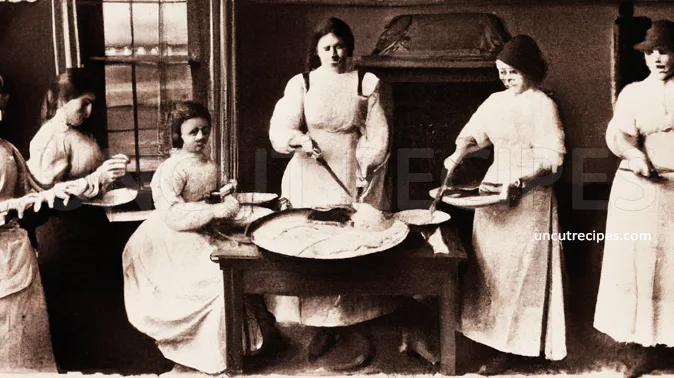
Chicken, which was more widely available and affordable in the United States than in Italy, soon became a popular substitute for the traditional eggplant in Parmigiana recipes. Similarly, while eggplant was a common ingredient in Southern Italy, it was less familiar to American palates at the time. Furthermore, many Italian-Americans began to embrace the use of more meat in their meals, a sign of prosperity in their new country.
The first written records of Chicken Parmesan in the United States date back to the mid-20th century. Since then, the dish has grown in popularity, becoming a staple of Italian-American cuisine and a classic in pizzerias and Italian restaurants across the country. It's typically served over spaghetti or on a sub roll, further illustrating the fusion of Italian tradition and American sensibilities.
While Chicken Parmesan may not have originated in Italy, it represents the evolution of Italian cuisine as immigrants adapted their culinary heritage to a new environment. Its history is a testament to the ability of food to tell the story of cultural adaptation and change. As of today, Chicken Parmesan stands as a beloved dish, not only in the United States but also across the globe, enjoyed by many who appreciate its hearty and comforting appeal.
TIPS:
Pound with Patience: When pounding the chicken, remember that the goal is not just to thin it but also to tenderize. Be firm, but don't hammer too hard, or you risk tearing the meat.
Season to Perfection: Don't be shy with the salt and pepper when seasoning your chicken. This will ensure that every bite is flavorful. If you'd like to add an extra layer of flavor, consider adding some Italian seasoning or garlic powder to the mix.
Coating Consistency: When dredging the chicken in flour, make sure to shake off the excess before moving on to the egg. Too much flour can create a barrier that prevents the egg and bread crumbs from adhering well.
Rest and Set: After coating the chicken with the bread crumbs, let it rest for a bit. This gives the coating time to set and dry out slightly, which will help it stick to the chicken better when frying.
Oil Temperature: It's crucial to ensure the oil is hot enough before adding the chicken. If it's too cool, the chicken will soak up the oil and become greasy. If it's too hot, the coating will burn before the chicken is cooked through. Look for the oil to shimmer but not smoke.
Don't Overcrowd: Avoid overcrowding the pan when frying the chicken. Each piece should have plenty of space around it. Overcrowding the pan can drop the oil's temperature too quickly and lead to soggy, oil-soaked chicken.
Cheese Matters: Use freshly grated cheese if possible. Pre-grated cheeses often contain anti-caking agents that can affect the way they melt and taste.
Timing is Everything: It's important not to overcook the chicken in the skillet because it will continue to cook in the oven. Aim for a nice golden color on each side.
Sauce Sparingly: Be careful not to over-sauce the chicken. Too much sauce can make the crispy coating soggy.
Safety First: Use an instant-read thermometer to ensure the chicken is fully cooked. This will take the guesswork out of it and ensure your chicken is both safe to eat and delicious.
Recipe Information
Skill Level
|
Time 45 Minutes |
Price
|
Serves 4 People |
| Healthiness |
Nutritional Information |
| Ratings (Add Rating & Review) |
Reviews 19 Reviews |
Ingredients:
- 4 Skinless, Boneless Chicken Breast Halves
0.5 cup Tomato Sauce
( better for pizza )
2 large Eggs
0.5 cup Provolone Cheese
( grated )
0.5 cup Olive Oil
( for frying, or as needed )
1 cup Panko Bread Crumbs
( or more as needed )
0.75 cup Grated Parmesan Cheese
( divided )
0.5 cup Fresh Mozzarella
( cut into small cubes )
2 teaspoons Olive Oil
2 tablespoons All-Purpose Flour
( or more if needed )
0.25 cup Fresh Basil
( chopped )
Salt
( to taste )
Freshly Ground Black Pepper
( to taste )
Allergens
| Dairy | Eggs | Gluten |
Directions:
01 - Preheat the oven to 230C / 450F degrees. This process will ensure your oven is hot and ready when you are!
02 - Chicken Preparation: Now, take your Chicken Breasts and place them in between two sheets of heavy-duty plastic or cling film. You can use resealable freezer bags for this too.
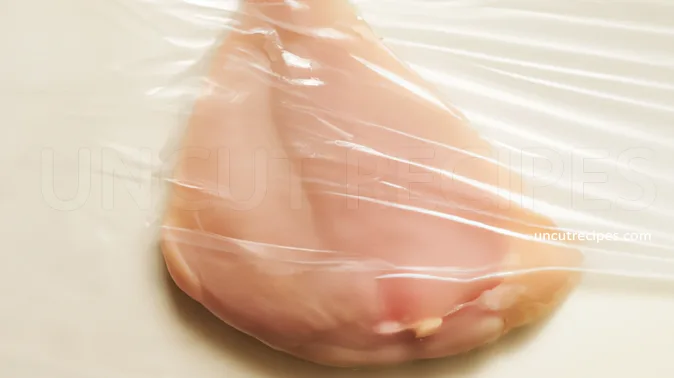
03 - Make sure your work surface is flat and sturdy and using a meat mallet (it looks a bit like a small hammer), firmly hit the Chicken on the smooth side until it becomes about 1.3cm / 0.5inch thick.
04 - Remove the plastic you used in the previous step and season the Chicken. Generously spread Salt and Black Pepper on both sides of each Chicken Breast.
05 - Then, take a sifter or a strainer and sprinkle Flour on both sides of the Chicken. This will give the Chicken a nice, even coat and help the other ingredients stick to it.
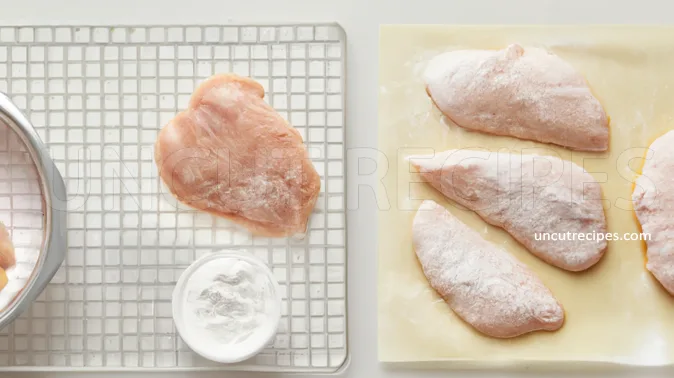
06 - Eggs: In a bowl that's wide enough to dip your Chicken, beat the Eggs until they're well mixed. This will serve as a 'glue' to help our Bread Crumbs stick to the Chicken. Set this bowl aside for a moment until STEP 08.
07 - Bread Crumb: In another bowl, combine Bread Crumbs and half of the amount of the Parmesan Cheese. This mixture will give our Chicken a delicious, crispy crust!
08 - Dressing the Chicken: Now, let's prepare the Chicken for cooking. Dip each Flour-coated Chicken Breast in the beaten Eggs, then transfer it to the Bread Crumb mixture. Make sure to press the Crumbs onto both sides of each Breast. Repeat this for each piece of Chicken. Let the Chicken rest for 10-15 minutes; this helps the coating to 'set'.
09 - Pour enough Olive Oil into a large skillet until it's about 1.2cm / 0.5inch deep, and heat it over medium-high heat until it shimmers. This is a sign that the Oil is hot enough.
10 - Cook the chicken in the hot Oil until it turns a beautiful golden color. It should take about 2 minutes on each side. Don't worry if the Chicken isn't fully cooked—it will finish cooking in the oven.

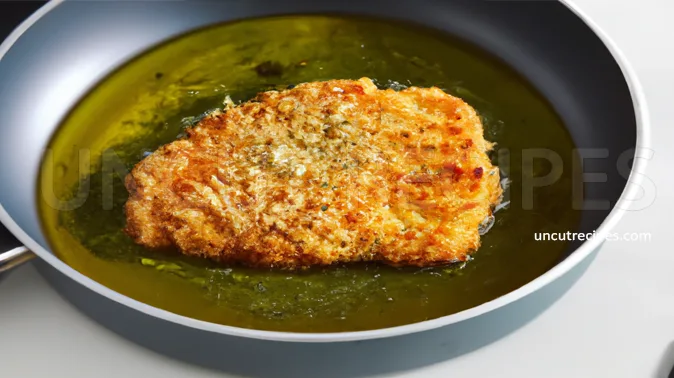
11 - Getting Ready to Bake: Transfer the golden-brown Chicken Breasts to a baking dish.
12 - On each Chicken Breast, add the Tomato Sauce, equal amounts of Mozzarella Cheese, Fresh Basil, and Provolone Cheese.
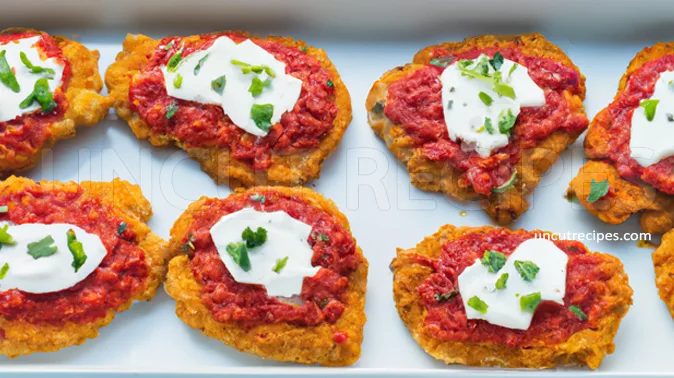
13 - Then sprinkle the remaining Parmesan Cheese on top and finish with a drizzle of Olive Oil on each piece. Now our chicken is dressed up and ready for the oven!
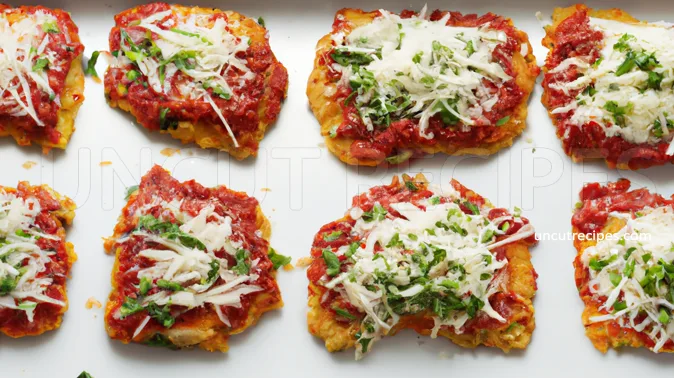
14 - Oven Time: Slide the baking dish into your preheated oven. Bake until the Cheese turns brown and bubbly, and the Chicken is cooked, which should take about 10 minutes. To be sure that the chicken is fully cooked, you can use an instant-read thermometer. Insert it into the thickest part of the chicken—it should read at least 74C / 165F degrees.
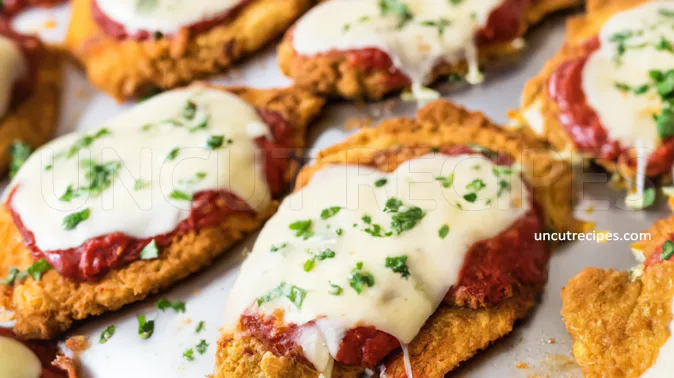
Notes:
Meat Preparation:
- Ensure your chicken breast is completely defrosted if frozen.
- When flattening the chicken, make sure not to pound too hard as this could tear the chicken. A gentle, even pressure is ideal.
- For those without a meat mallet, you can use a rolling pin or even a heavy can to flatten the chicken.
Seasoning and Coating:
- When seasoning the chicken, you can adjust the quantity of salt and pepper based on your taste preference.
- If you're unable to find panko bread crumbs, you can substitute them with regular bread crumbs or even crushed cornflakes for a different texture.
- Allow the coated chicken to rest for 10-15 minutes, as stated in the recipe, which helps the coating adhere better.
Cooking Process:
- The oil in the pan should not be smoking; if it is, the heat is too high. It should only shimmer.
- While frying, avoid overcrowding the pan to ensure even cooking and browning.
Toppings and Baking:
- For the tomato sauce, using a pizza sauce can add a unique flavor. However, you can use any tomato-based sauce you have on hand.
- Cheese: Freshly grated cheese melts better compared to pre-packaged shredded cheese, so if you have the time, grate your own.
- Fresh Basil: Fresh herbs can make a significant difference in taste, but if you don't have fresh basil, dried basil can work as a substitute (use a third of the amount, as dried herbs are more concentrated).
Temperature Check:
- Using an instant-read thermometer is the best way to check if your chicken is fully cooked. However, if you don't have one, another way to check is by cutting into the thickest part of the chicken; the juice should run clear and there should be no pink in the middle.
Storage and Reheating:
- If you have leftovers, store in an airtight container in the refrigerator for up to 3 days.
- When reheating, avoid using the microwave as it can make the breaded chicken soggy. Instead, reheat in the oven at a low temperature (150C/300F) until warmed through.
Nutritional Information
( Per Portion )
|
Calories |
625 kcal (31%) |
| Total Carbohydrate | 9.5g (3%) |
| Cholesterol | 175mg (58%) |
|
Total Fat |
46.5g (72%) |
| Saturated Fat | 14.5g (73%) |
| Polyunsaturated Fat | 5g |
| Monounsaturated Fat | 22.5g |
| Trans Fat | 0g |
| Fibers | 1g (4%) |
| Protein | 43.5g (87%) |
| Sugar | 2.5g |
|
Vitamin A |
375 IU (8%) |
|
Vitamin B1 (Thiamin) |
0.3mg (25%) |
| Vitamin B2 (Riboflavin) | 0.4mg (33%) |
| Vitamin B3 (Niacin) | 12mg (75%) |
| Vitamin B5 (Pantothenic Acid) | 1.7mg (34%) |
| Vitamin B6 | 0.9mg (69%) |
| Vitamin B7 (Biotin) | 7mcg (23%) |
| Vitamin B9 (Folate) | 37mcg (9%) |
| Vitamin B12 | 0.6mcg (25%) |
| Vitamin C | 4mg (5%) |
| Vitamin D | 1.1 IU (2%) |
| Vitamin E | 2.4mg (16%) |
| Vitamin K | 23mcg (19%) |
| Choline | 126mg (23%) |
| Carnitine | 28.7mg |
|
Calcium |
475mg (48%) |
|
Chloride |
196mg (9%) |
| Chromium | 2.5mcg (7%) |
| Copper | 0.2mg (22%) |
| Fluoride | 4mcg |
| Iodine | 7mcg (5%) |
| Iron | 2.9mg (16%) |
| Magnesium | 49mg (12%) |
| Manganese | 0.1mg (5%) |
| Molybdenum | 3mcg (7%) |
| Phosphorus | 374mg (53%) |
| Potassium | 356mg (8%) |
| Selenium | 20mcg (36%) |
| Sodium | 470mg (32%) |
| Sulfur | 188mg (44%) |
| Zink | 4.8mg (44%) |
* Percent Daily Values are based on a 2,000 calorie diet. Your daily values may be higher or lower depending on your calorie needs.
** Nutrient information is available for all ingredients in this recipe. Amount is based on available nutrient data collected from all over the internet.
(-) Information is not currently available for this nutrient. If you are following a medically restrictive diet, please consult your doctor or registered dietitian before preparing this recipe for personal consumption. |
| Written by: Uncut Recipes | Disclaimer |




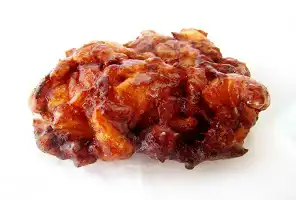
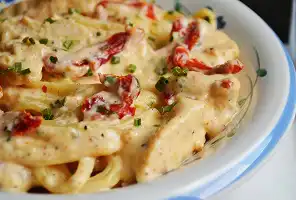
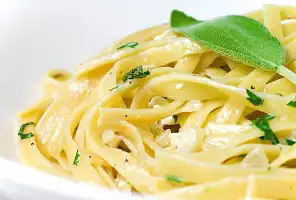
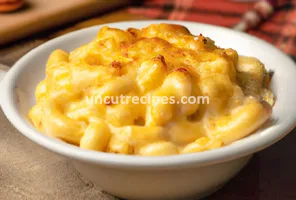
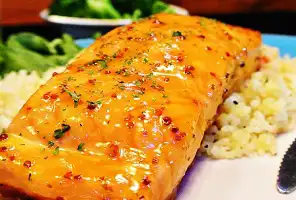

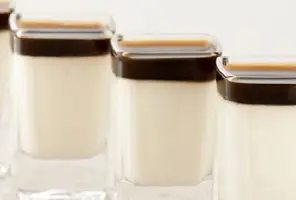
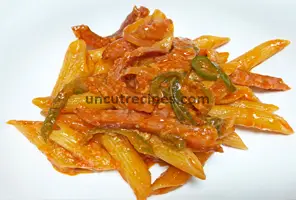

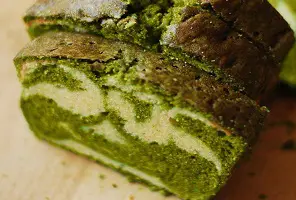
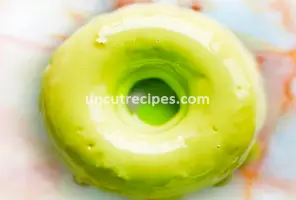
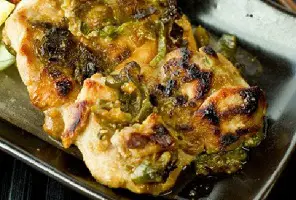
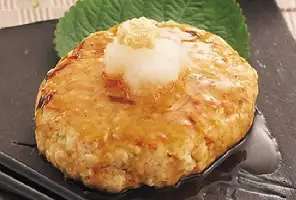

May 29, 2023
My household enjoys this Chicken Parmesan dish so much that we find ourselves making it at least bi-monthly. It's become a real comfort food for us.